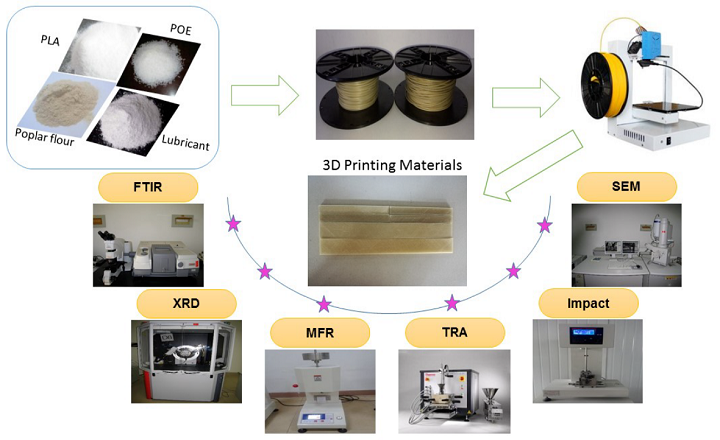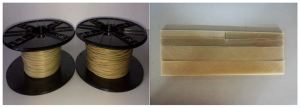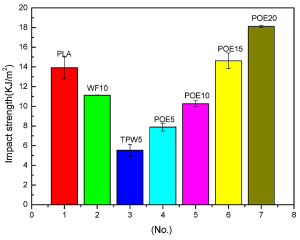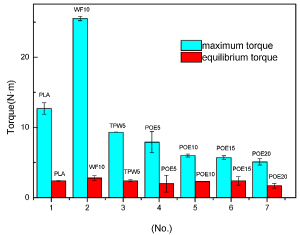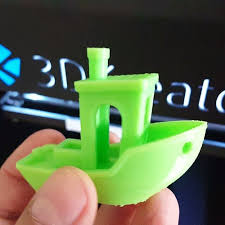 Plastic is the least expensive, most used 3D printing material out there – as an example, right now on my desk, I have seven little animal figurines, and one tiny Pacman ghost, all 3D printed out of plastic. Of the plastics, ABS and PLA are the two most popular, and PLA (polylactic acid) is more rigid, easier to color, and considered to be more environmentally friendly than ABS. It’s a polymer from renewable resources, with excellent mechanical properties and fluidity, and its low toxicity makes it a good choice for applications in the medical field.
Plastic is the least expensive, most used 3D printing material out there – as an example, right now on my desk, I have seven little animal figurines, and one tiny Pacman ghost, all 3D printed out of plastic. Of the plastics, ABS and PLA are the two most popular, and PLA (polylactic acid) is more rigid, easier to color, and considered to be more environmentally friendly than ABS. It’s a polymer from renewable resources, with excellent mechanical properties and fluidity, and its low toxicity makes it a good choice for applications in the medical field.
But, while PLA is good for 3D printing very detailed items, it’s also easier to break these items, though the material is less prone to breakage during extrusion-based 3D printing.
A collaborative team of researchers from the Shandong University of Technology, the Shandong Research Center of Engineering and Technology for Clean Energy, and Anhui Aile Door and Window System Engineering Co., Ltd. were interested in looking at the defects in PLA properties, like high brittleness, poor thermal stability, and low glass transition temperature, that limit its use in further applications. The researchers also wanted to see if they could modify PLA to make it better.
The team recently published a paper, titled “Effects of Lubricant and Toughening Agent on the Fluidity and Toughness of Poplar Powder-Reinforced Polylactic Acid 3D Printing Materials,” that presents and discusses the effects of wood flour, lubricant, and flexibilizer on the fluidity and impact strength of PLA 3D printing materials.
The abstract reads, “Three dimensional (3D) printing materials were manufactured with polylactic acid (PLA) and poplar powder using the twin screw extruder and 3D printing consumables extruder. Lubricant (TPW604) and toughening agent polyolefin elastomer (POE) were utilized to improve the fluidity and toughness of the materials. 3D printing materials were tested by infrared spectroscopy, X-ray diffraction, melt flow rate, rheology behavior, impact and scanning electron microscope. The results show that the poplar powder could decrease impact strength of PLA, the same as TPW604. Unlike poplar powder, TPW604 can improve the fluidity of 3D printing materials. And POE can fill the voids formed by poplar powder in PLA, enhance interface compatibility between poplar powder and PLA, and effectively improve the fluidity and impact strength of 3D printing materials.”
Materials for FDM 3D printing need to meet environmental requirements (i.e. be safe, non-irritating, and non-toxic), be suitable for melting temperature, and have low shrinkage and high mechanical strength.
In the past, other researchers have tried to reinforce and modify PLA materials by mixing them with materials like plastic polycaprolactone (PCL), hydroxyapatite, polyethylene glycol (PEG), and modified cellulose nanocrystals. But due to its low cost and rich source, fiber reinforcement is the most common way of modifying PLA.
Other researchers have added coconut shell powder to PLA, filled it with wood flour, and mixed it with wood flour, though results from the wood flour showed that it had a negative effect on the PLA’s rheology. So fiber can also negatively impact PLA, by increasing its viscosity and reducing its melt index, among other issues.
“As a kind of wood-plastic composite (WPC), wood/PLA composite has the disadvantages of WPC,” the researchers wrote. “The wood fiber could effectively improve the mechanical strength of PLA. Wood flour can not only be uniformly dispersed in PLA matrix, but also be effectively encapsulated by PLA macromolecule. But wood fiber would limit the movement of PLA macromolecular chains, which could result in a significant decrease in the crystallization capacity. The impact toughness of wood/PLA composites is poor and brittle fracture would occur when subjected to external force, which is similar to pure PLA.”
- Impact strength of 3D printing materials.
- Maximum and equilibrium torque of different samples for 3D printing materials.
The researchers decided to give it a go anyway, and reinforced PLA with wood flour – more specifically, poplar powder – to make a new 3D printing material, and attempted to change the material’s fluidity and toughness by adding lubricant and a flexibilizer. The materials were fabricated with a 3D printing consumables extruder at 180 °C.
“Following are the main conclusions which can be drawn from the research: the addition of poplar powder was bad for the fluidity and toughness of PLA because of the agglomeration,” the researchers concluded. “Although the lubricant improved the fluidity, it reduced the impact strength of 3D printing materials. In addition, the effect of the toughening agent was up to the expectations. The POE not only could improve the fluidity and toughness of 3D printing materials, but also the higher the content, the better the property in a certain range because of the effect of POE on wood flour. As consideration, 3D printing materials prepared in this study not only could be applicable to 3D printing, but also be environmentally, friendly and promising in the field of printing.”
So while things did not go as well as the researchers might have hoped, their work can offer a theoretical basis for developing new 3D printing materials, in addition to providing “theoretical guidance for the scientific determination of application fields.”
Co-authors of the paper are Qingfa Zhang, Hongzhen Cai, Andong Zhang, Xiaona Lin, Weiming Yi, and Jibing Zhang.
Discuss this story and other 3D printing topics at 3DPrintBoard.com or share your thoughts in the comments below.
Subscribe to Our Email Newsletter
Stay up-to-date on all the latest news from the 3D printing industry and receive information and offers from third party vendors.
Print Services
Upload your 3D Models and get them printed quickly and efficiently.
You May Also Like
3D Printing News Briefs, June 11, 2025: Sustainability, Automotive Tooling, & More
We’re starting with sustainability news in today’s 3D Printing News Briefs, as EOS has strengthened its commitment on climate responsibility, and Zestep is making 3D printing filament out of eyewear...
3D Printing 50 Polymer Stand-In Parts for Tokamaks at the PPPL & Elytt Energy
Of all the world’s things, a tokamak is one of the hardest, most complex, expensive and exacting ones to make. These fusion energy devices make plasma, and use magnets to...
3D Printing News Briefs, May 17, 2025: Color-Changing Materials, Humanoid Robot, & More
We’re covering research innovations in today’s 3D Printing News Briefs! First, Penn Engineering developed 3D printed materials that change color under stress, and UC Berkeley researchers created an open source,...
Firehawk Aerospace Partners with JuggerBot 3D, Gets $1.25M from AFWERX for 3D Printed Propellants
Texas-based Firehawk Aerospace, an advanced energetic materials firm that works with aerospace and defense applications, announced a strategic partnership with JuggerBot 3D, an Ohio-based large-format 3D printer manufacturer. Together, the...


